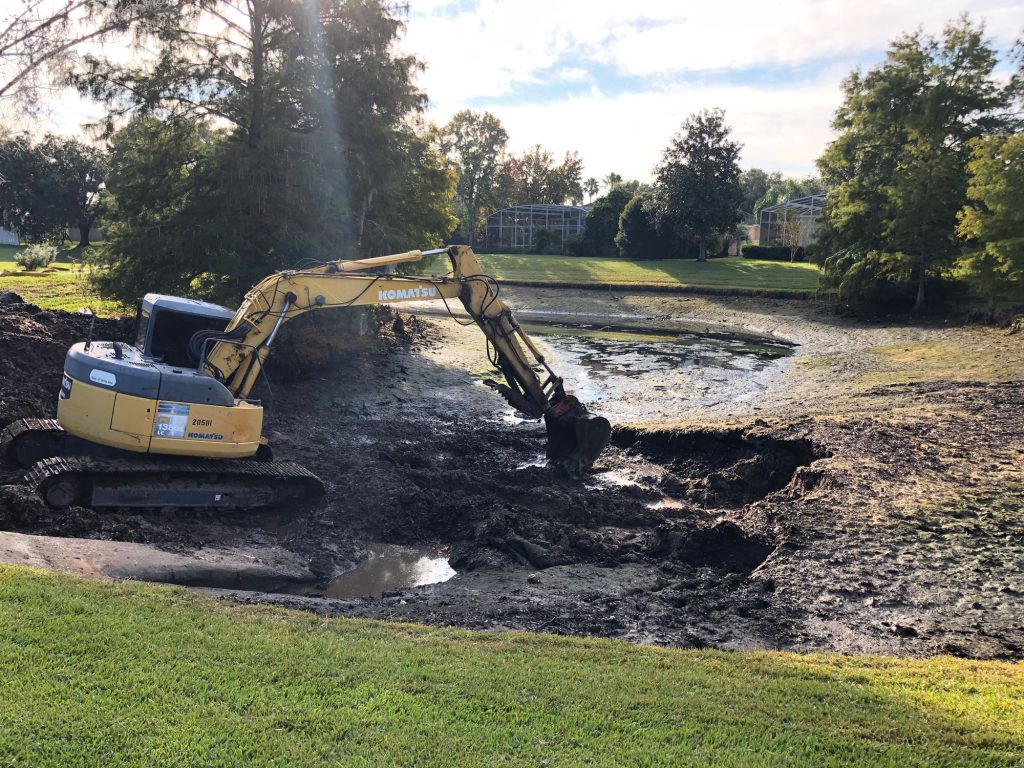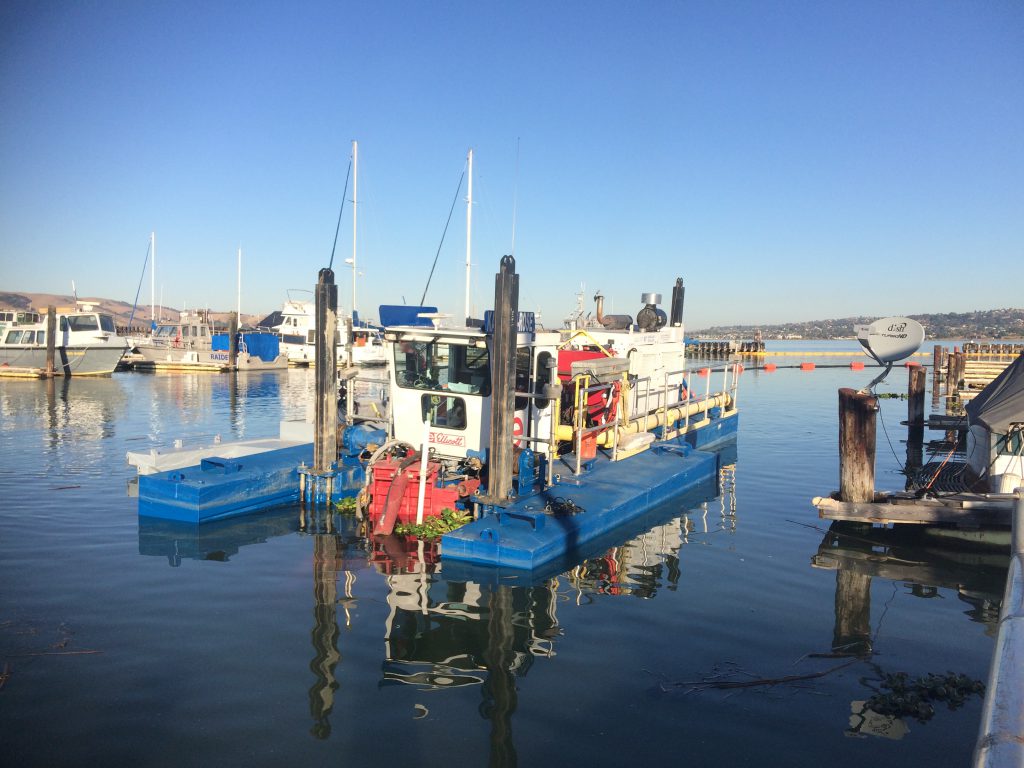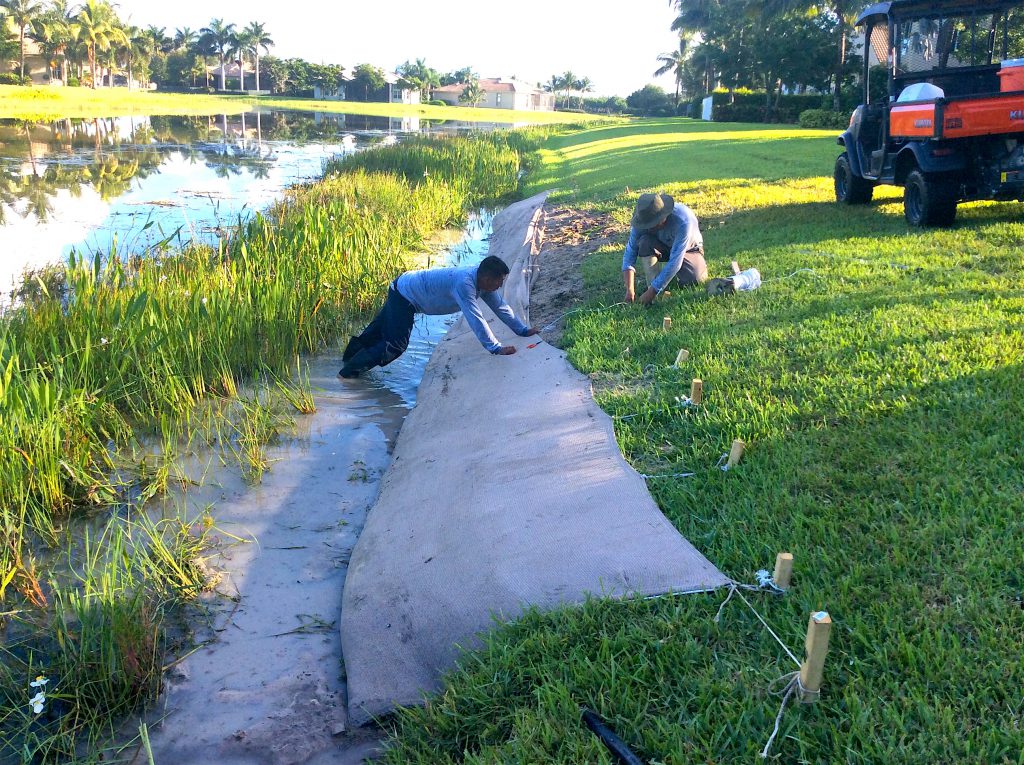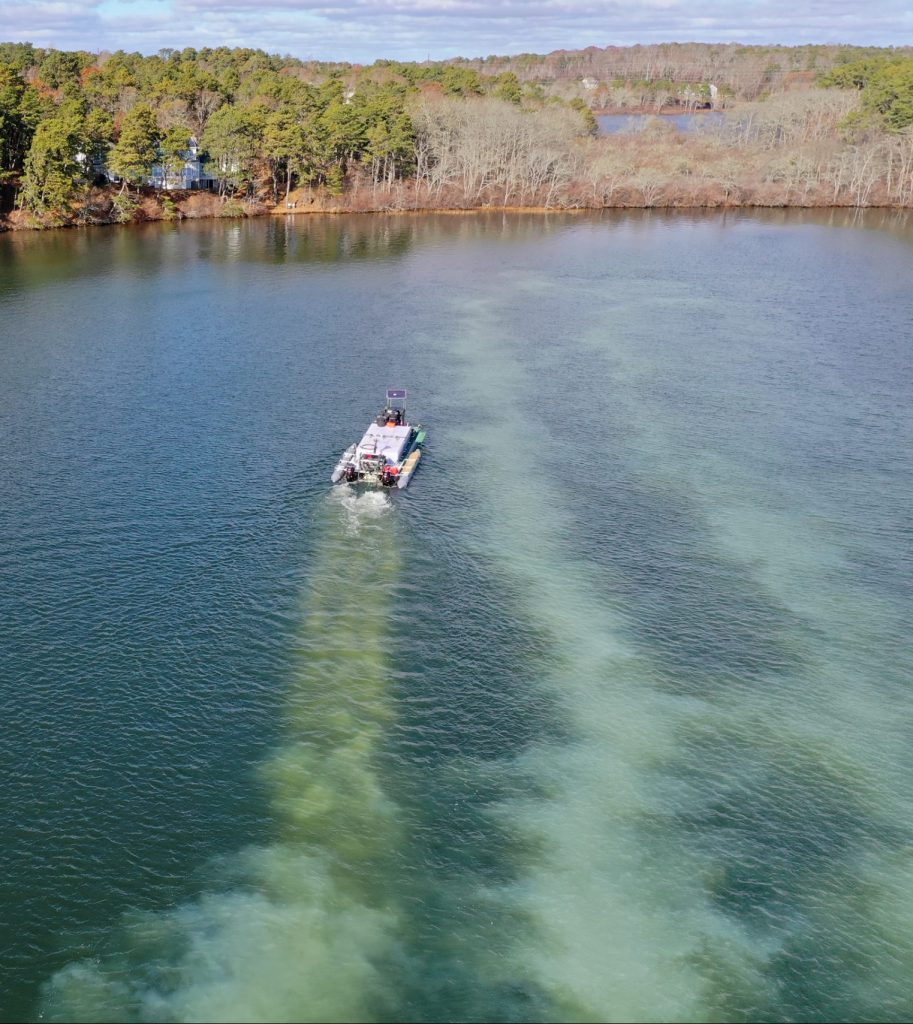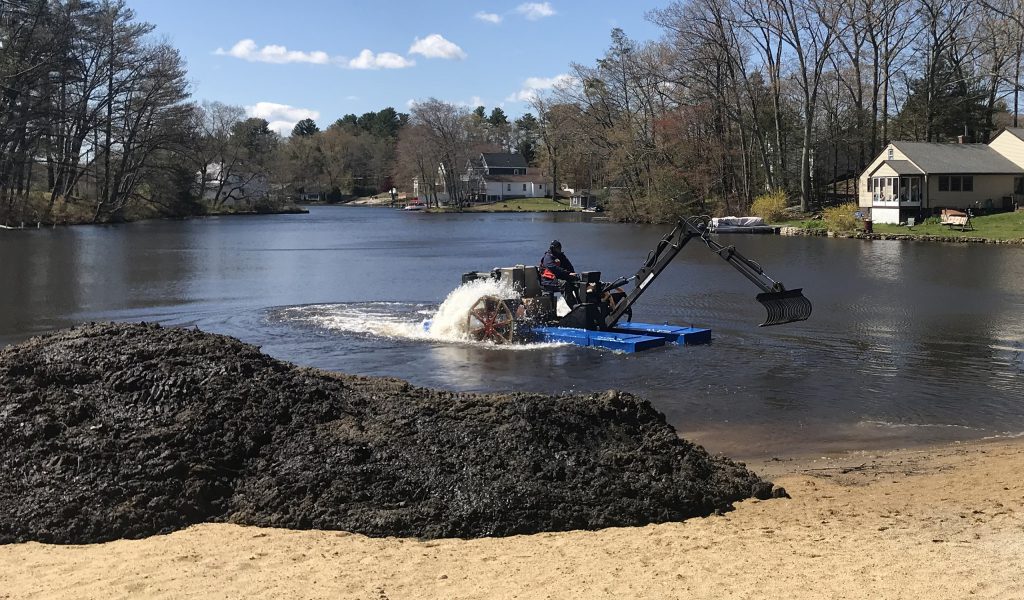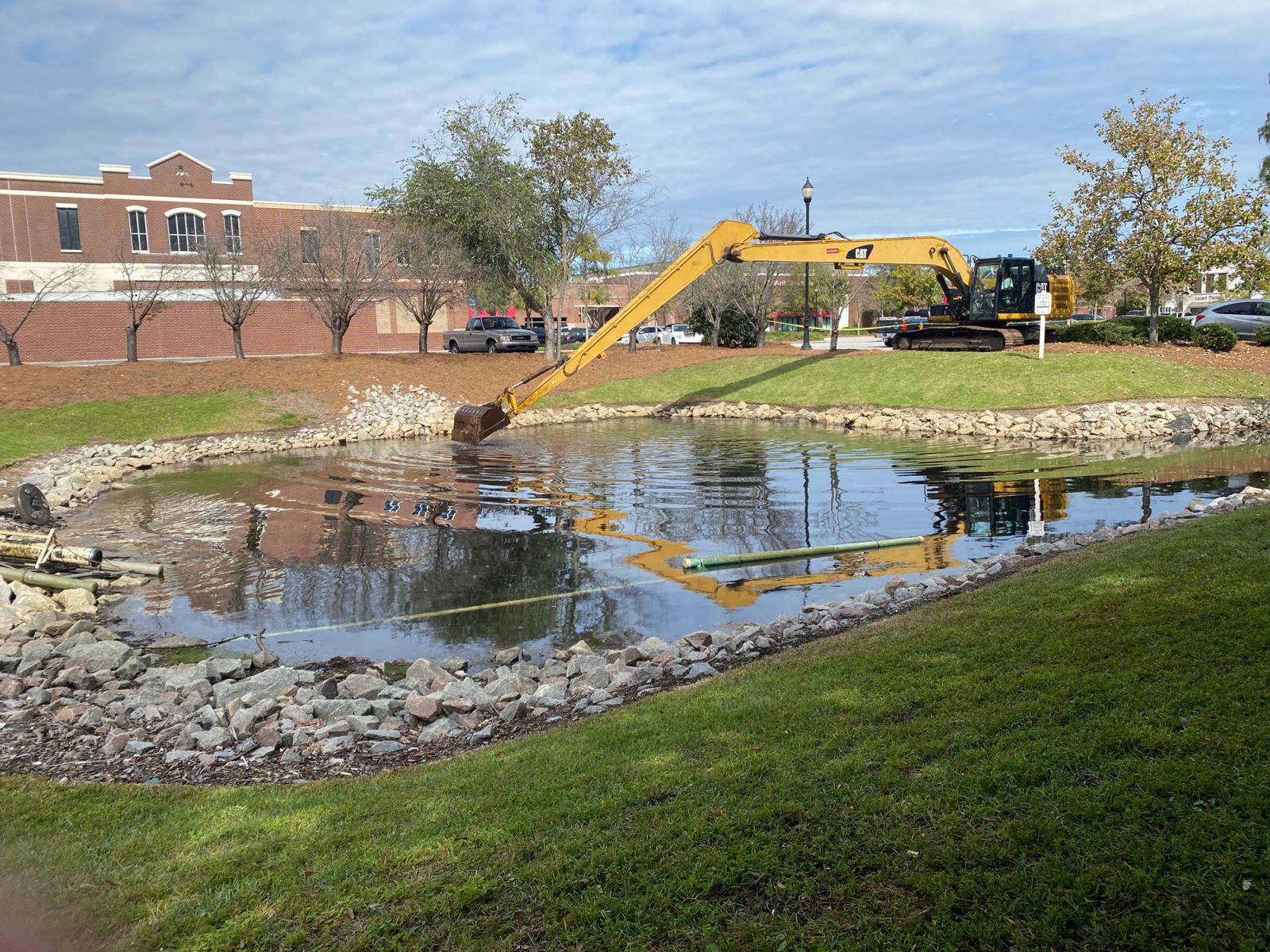
Why Is My Pond Drying Up?
We’ve all experienced the surprises and pain points that come with aging. Year after year, we undergo changes that impact our health and physical functions. This process is a natural and inevitable part of life that not only affects humans and animals, but also lakes and ponds. And just like people can expedite their rate of aging through unhealthy diets or lack of exercise, our water resources can age faster when exposed to excess nutrients, erosion, invasive weeds, harmful algal blooms, and pollution. As these factors compound, a waterbody will slowly fill in with muck, sediment, and debris, resulting in a loss of depth and volume. Over the course of 10-20 years, a pond can recede—or, seemingly, dry up—until it resembles nothing more than a marsh.
Once a waterbody has reached this point, dredging is one of the few solutions available to restore it to a healthier and more functional condition. Dredging is the process of physically removing hundreds or thousands of pounds of sediment and organic materials that accumulated over time.
Depending on the unique needs, budget, and characteristics of a property, professionals may recommend one of two styles of dredging:
Mechanical Dredging
During mechanical dredging, a waterbody is completely drained to allow full visibility of the bottom. A long-reach excavator is used to scoop out excess materials, which are then removed from the site using semi-trucks and trailers.
Hydraulic Dredging
Hydraulic dredging does not require a waterbody to be fully drained. Instead, hydraulic dredges use a specialized tube to pump water and materials into a holding tank for filtration. The filtered water is then returned to the waterbody.
Though dredging is highly effective at resetting an aged waterbody, it is one of the largest expenses a community will ever face. Stakeholders should also be prepared to take swift and ongoing action to cultivate their new aquatic ecosystem once the project is complete. Without responsible management, they may see their water resource prematurely return to its prior condition.
Prevent Loss of Depth with Erosion Repair
One of the primary factors that contributes to loss of depth and volume is shoreline erosion. Poorly maintained shorelines can crumble and collapse over relatively short periods of time, spilling sediment into the water and creating steep embankments. It’s common for stakeholders to bioengineer a new shoreline alongside dredging efforts. During this process, professionals repurpose some of the dredged muck to reshape the bank of the waterbody. It is held in place using a knitted mesh material called SOX Solutions for years of stabilization. The material can then be planted with beneficial buffer plants that establish deep root systems for added durability.
Enhance Water Quality
Another problem that contributes to the gradual loss of depth is nuisance weeds and algae. This growth is unsightly and, when out of control, can wreak havoc on aquatic ecosystems by causing stagnation, crowding out native plants and animals, and contributing to poor water quality conditions. Moreover, when plants and algae die off, they sink and accumulate at the bottom. As they decompose, they release nutrients that fuel more nuisance growth. It’s essential to prevent this negative cycle using proactive solutions like nutrient remediation. Professionals can use a variety of naturally-occurring products such as Phoslock and Alum to capture excess nitrogen and phosphorus from the water column which helps improve water quality. Nutrient mitigation techniques can be further enhanced by introducing floating fountains or submersed aeration systems that support circulation and desirable oxygen levels in the water column.
Implement Proactive Management Strategies
Preventative management is highly impactful and can help extend the lifespan of a waterbody for years or decades, but even the most responsibly maintained ecosystems will still age. Luckily, with consistent water quality testing, maintenance, and monitoring, stakeholders are better able to predict when muck and sediment will need to be removed. In many cases, hydro-rakes can be used instead of dredges to conduct “spot treatments” in coves or high-priority areas such as around pipes and stormwater drains. Hydro-raking is similar to dredging in some respects, but typically requires less time and funds. Hydro-raking is also less intrusive in the ecosystem because it does not displace native wildlife or disturb the shoreline. In addition to hydro-raking, professionals can apply biological bacteria. These beneficial bacteria naturally consume muck and decomposing materials at the bottom of the waterbody and help improve the overall health of the water column.
Staying Ahead of Your Aging Waterbody
Lakes and ponds play integral roles in our communities by collecting stormwater, supporting agriculture and drinking water needs, sheltering beautiful native wildlife, and creating opportunities to connect and interact with nature. It can be easy to take the many benefits of water for granted—until they’re gone. The best way to thwart the degeneration of our valued waterbodies is by implementing sustainable practices before problems like excess weed growth or flooding get out of hand.
WHO WE ARE
Restore Your Waterbody with Proactive Management
Call us at 888-480-5253 or complete the form below to connect with an aquatic management expert.
SOLitude Lake Management is a nationwide environmental firm committed to providing sustainable solutions that improve water quality, enhance beauty and preserve natural resources.
SOLitude’s team of aquatic scientists specializes in the development and execution of customized lake, stormwater pond, wetland and fisheries management programs. Services include water quality testing and restoration, algae and aquatic weed control, installation and maintenance of fountains and aeration systems, shoreline erosion control, muck and sediment removal and invasive species management. SOLitude partners with homeowners associations, golf courses, private landowners, businesses and municipalities. SOLitude Lake Management is part of Rentokil, a leading business services company, operating across the United States, Canada and Puerto Rico.
For more information, visit SOLitude Lake Management at solitudelakemanagement.com, and connect on Facebook, LinkedIn and Twitter.








